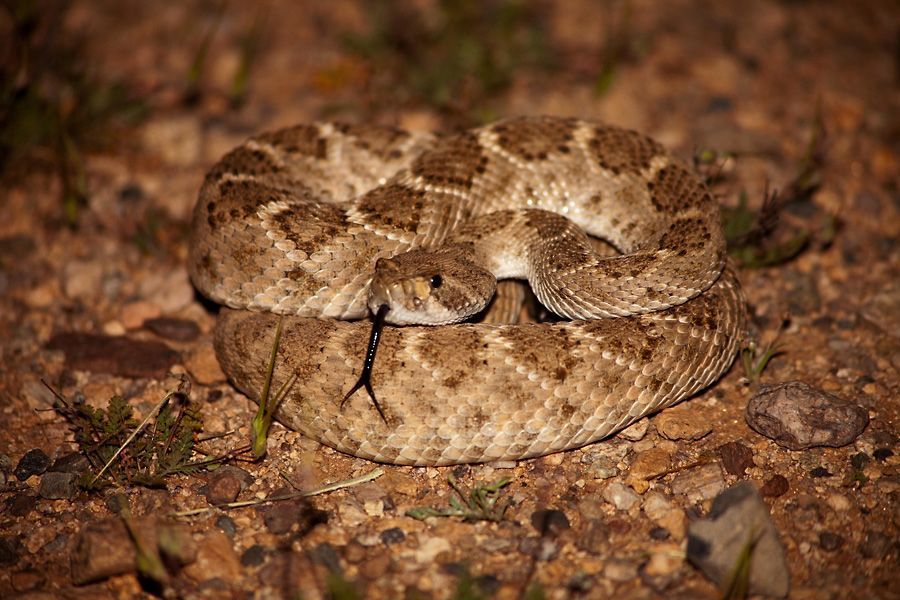Snake Photography
Sidewinder Rattlesnake
Western Diamondback Rattlesnake
I had the opportunity to go out “Herping” with Bryan D. Hughes (Fieldherper.com) a little while back. I enjoyed his knowledge of reptiles and his ability to find them! Basically, we went out to a lonely road through the desert (Maricopa County, Arizona) at night and drove around looking for snakes and other reptiles. Bryan has eyes trained with many nights of practice at spotting things along the road. The few things I thought I saw were only sticks or smears in the asphalt.
Once a snake was spotted, Bryan would wheel the vehicle around and come back with the headlights illuminating the entire area we would be walking in. Ted MacRae of Beetles in the Bush says “where there’s one, there’s more” and apparently that is often as true for snakes as it is for beetles, although it didn’t happen on this night!
Bryan was gracious enough to attend to the snake while I tried to set up and take some photos. I was glad to have someone as accomplished as Bryan watching the snake so I could concentrate on framing and focusing the shot. I didn’t end up with any pictures as nice as Bryan has on this website, but they are some of my best snake photographs to date, and I now know how to improve!
I like the above photo of the Sidewinder because it shows the neat horns above its eyes. The snake was nervous and kept moving around at a high rate of speed which made taking its picture difficult.
The Western Diamondback Rattlesnake in the picture below was much more cooperative. I took many photos trying to get the timing right to show its tongue sticking out. It was tasting the breeze to try to figure out what kind of animal was pestering it.

Western Diamondback Rattlesnake
(Crotalus Atria)
Bryan had a technique for “winding” the snake up into a coil which was handy for pictures! The Diamondbacks would often rear up and strike (only 1/3 of their body length, and no – they can’t jump) as in this final picture.

Diamondbacks, Mohave, and Long-Nosed Snakes
We saw the one Sidewinder, 4 Diamondbacks and one Mohave Rattlesnake (Crotalus scutulatus) as well as a Long-nosed Snake (Rhinocheilus lecontei– that was not very photogenic) and a Western Banded Gecko (Coleonyx variegatus). Bryan said it was a pretty slow night, but I was happy to have a chance to go out and experience this unique hobby!
Gila Monster - Venomous Lizard
We worked at a dude ranch trimming palms and Eucalyptus trees last week and I was please to see a Gila Monster walking along the sidewalk! This was only the second one I have seen in the wild, both being at this ranch, although years apart. I quickly got out of the lift and ran to my truck for the camera. I was able to fire off 4 shots with this being the best. The Gila Monster kept moving (fairly fast) and went into some shrubs where I left it alone.
Gila Monsters have an unusual gait. The move both limbs on each side of their body at the same time, in opposite directions. So, on the left side they will move their front leg forward and their back leg backward while on their right side they are moving their front leg back and their rear leg forward (as in the photo above). That sounds complicated, and possibly it is, but not for the Gila Monster! It moves along very rapidly and can really cover some ground! The result of this motion is that their body swings back and forth in a very interesting way.
The Gila monster is a species of venomous lizard native to the Southwestern United States and the northwestern Mexican state of Sonora. It is a heavy, typically slow-moving reptile, up to 56 centimetres long, and it is the only venomous lizard native to the United States.
